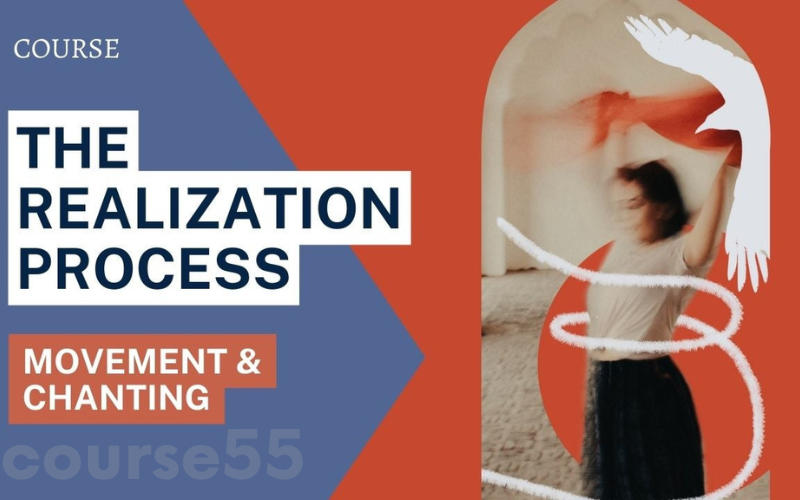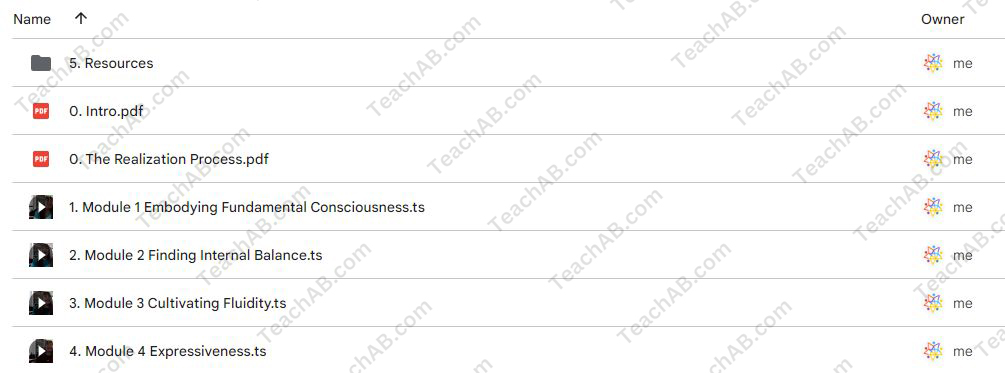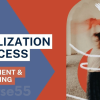The Realization Process: Moving and Chanting as Fundamental Consciousness – Collection By Judith Blackstone
$149.00 Original price was: $149.00.$23.00Current price is: $23.00.
The realization process: Moving and chanting as fundamental consciousness
Content Proof:
The journey of spiritual awakening can often feel like traversing a dense forest where the path is obscured by undergrowth. Judith Blackstone’s “The realization process: moving and chanting as fundamental consciousness” acts as a guiding light, illuminating this complexity through an immersive approach that ties together the physical and the spiritual. By emphasizing the vital roles of movement and vocal expression in the process of realizing one’s inherent consciousness, Blackstone presents a framework that encourages a deeper attunement to ourselves and our environment. Her work invites individuals on a transformative journey where the body becomes not just a vessel but an active participant in the exploration of our fundamental nature.
Within this collection lies a profound wisdom derived from Blackstone’s extensive background in nondual realization and somatic psychotherapy. The embodiment of her principles offers not just theoretical instruction but practical tools for real-life application. Through specific movements and chants, Blackstone’s methodology serves as a bridge to connect with our inner selves, establishing a channel for healing and spiritual discovery. Each practice invites participants to not just observe their consciousness but to experience it fully through the intelligent dance of body and spirit.
Overview of the realization process
Embodiment: A pathway to spiritual awakening
Blackstone’s realization process promotes the integration of movement and vocal expression as essential components of spiritual growth. This integration is likened to the way a river flows seamlessly through various terrains adaptable yet steadfast. Just as a river nourishes its surroundings, the act of moving and chanting nourishes the soul, providing individuals with tools to connect deeply with their inherent consciousness.
Participants are guided through a series of specific movements that are attuned to their bodily experiences. These movements create a resonance within, facilitating the awakening of an understanding that transcends mere intellectual knowledge. For instance, when a practitioner engages in mindful movement, it is akin to peeling layers of an onion; with each motion, they strip away accumulated stresses and reclaim their authentic selves.
The rhythmic vibrations of chanting further enhance and deepen this process. Vocal sounds can penetrate into the emotional depths and often overlooked traumas of an individual. By engaging in this dual practice of movement and sound, practitioners can navigate through their emotional landscapes, addressing both personal and collective traumas in a holistic manner.
Connection with the environment
The realization process also underscores the importance of our connection with the environment. In a world often dominated by disconnection and distraction, Blackstone’s work serves as a reminder of our intrinsic interconnectedness with all life forms. Just as trees share their nutrients through an underground network, our interactions through movement and sound create a shared space of healing and unity. This helps foster awareness that we are not isolated beings but part of a larger tapestry of existence.
In this way, Blackstone’s practices do not only promote individual healing but also provide a sense of collective responsibility and awareness. As participants deepen their understanding of their own consciousness, they naturally cultivate a deeper empathy and compassion for others. It becomes clear that the journey of self-discovery is inextricably linked to the well-being of those around us, a realization that is crucial in our current global landscape.
Techniques and practices
Core techniques: Movement and chanting
The realization process’s core techniques are specifically designed to resonate with embodied experiences. Below is a concise overview of essential movements and chants that practitioners can employ:
| Technique | Description |
| Grounding Movement | Simple, conscious movements that connect the practitioner to the earth, fostering stability. |
| Breath Sequence | A rhythmic breathing pattern that aligns with physical movement, promoting a presence in the body. |
| Chanting | Utilization of vocal sounds to express emotions and awaken inner consciousness. |
These practices provide a structured yet flexible framework for engaging with one’s consciousness. They are designed not only for individuals seeking personal transformation but also for therapists and facilitators who work within somatic and relational healing traditions.
The importance of presence
One of the most poignant themes in Blackstone’s work is the absolute need for presence throughout this process. Being fully present is akin to a lighthouse guiding a ship through a foggy night. It is the beacon that allows practitioners to navigate their inner landscapes safely and effectively. By focusing on their body and movements, individuals cultivate a heightened awareness that enables them to confront and embrace their fears and anxieties without being overwhelmed.
In practice, staying present means recognizing thoughts and emotions as they arise, accepting them, and then allowing them to flow through the body without judgment or resistance. This practice of acceptance and acknowledgment fosters self-love and compassion, paving the way for healing and spiritual growth.
Healing through movement and sound
Psychological benefits of the realization process
Engaging in the realization process does not merely unlock spiritual insights; it also serves as a powerful tool for psychological healing. The marriage of movement and sound in Blackstone’s practices allows individuals to confront and address traumas, releasing emotional blockages and fostering a sense of freedom.
Numerous studies have highlighted the efficacy of somatic practices in psychological healing. For instance, research published in the Journal of Traumatic Stress indicates that body-based therapies can significantly decrease symptoms of PTSD, reinforcing the notion that our bodies hold onto trauma until it is processed and released. Blackstone’s techniques resonate with this research, providing practitioners with tangible means to navigate their emotional states and spiritual experiences.
Authentic relationships through shared experience
Moreover, the realization process promotes the development of authentic relationships with oneself and others. By engaging with these practices in a group setting, participants experience a shared vulnerability that builds deep connections and fosters trust. This dynamic is essential in healing, as it cultivates a supportive environment where individuals can collectively explore their experiences.
In effect, the journey through movement and chanting nurtures a rich soil where genuine relationships can grow a community rooted in understanding, compassion, and shared consciousness. Just as the roots of trees intertwine underground, so too do the relationships formed through these practices enrich our experiences of love and connection.
Conclusion
Judith Blackstone’s “The realization process: moving and chanting as fundamental consciousness” presents a comprehensive roadmap for those seeking to deepen their spiritual journey while cultivating an authentic connection to themselves and the world around them. By integrating movement and vocal expression, practitioners can explore profound layers of consciousness that might otherwise remain unexplored. The practices and principles laid out in this collection are invaluable for anyone on a quest for spiritual awakening and holistic healing. As we embrace these tools, we not only foster our own growth but contribute to a broader vision of unity, healing, and interconnectedness a vision of a world where every individual recognizes their intrinsic value and connection to the greater whole.
Frequently Asked Questions:
Business Model Innovation: We use a group buying strategy that enables participants to share costs and access popular courses at lower prices. This approach helps individuals with limited financial resources, although it may raise concerns among content creators regarding distribution methods.
Legal Considerations: Our operations navigate complex legal issues. While we do not have explicit permission from course creators to resell their content, there are no specific resale restrictions mentioned at the time of purchase. This lack of clarity allows us to offer affordable educational resources.
Quality Control: We guarantee that all course materials provided are identical to those offered directly by the creators. However, please note that we are not official providers. As a result, our services do not include:
– Live coaching calls or sessions with the course author
– Access to exclusive author-controlled groups or portals
– Membership in private forums
– Direct email support from the author or their team
Our goal is to make education more accessible by offering these courses independently, without the additional premium services available through official channels. We appreciate your understanding of our unique approach.
Be the first to review “The Realization Process: Moving and Chanting as Fundamental Consciousness – Collection By Judith Blackstone” Cancel reply
You must be logged in to post a review.
Related products
Personal Development
Personal Development
Personal Development
The Wavy Language of Vals – Clarisa Aragón & Jonathan Saavedra
Personal Development
Personal Development
Personal Development
Magnetic Gaze Level 2 – Awareness – Fabricio Astelo – Bruno Martins – Charisma School
Personal Development
Personal Development
Online – Master Planning for Life USA Aug 2020 – John Demartini (Videos Only)
Personal Development
Personal Development
Personal Development
Harvard ManageMentor Premium Collection – Harvard Business Publishing
Personal Development
Personal Development
Magnetic Gaze Level 1: Foundations – Fabricio Astelo – Bruno Martins – Charisma School



















Reviews
There are no reviews yet.